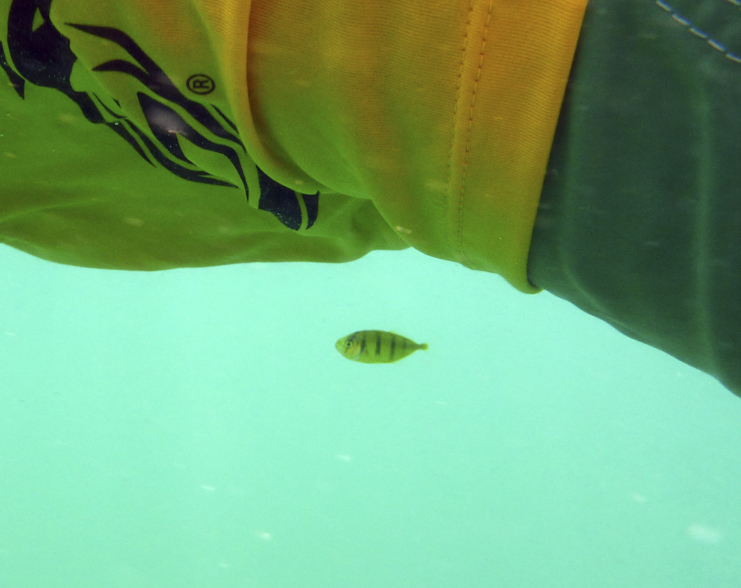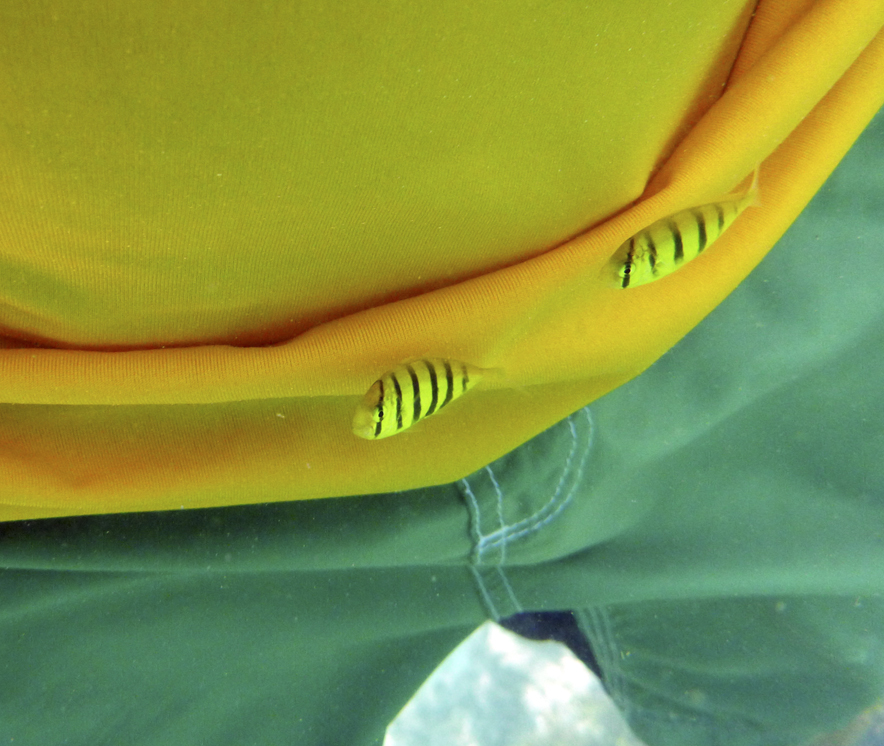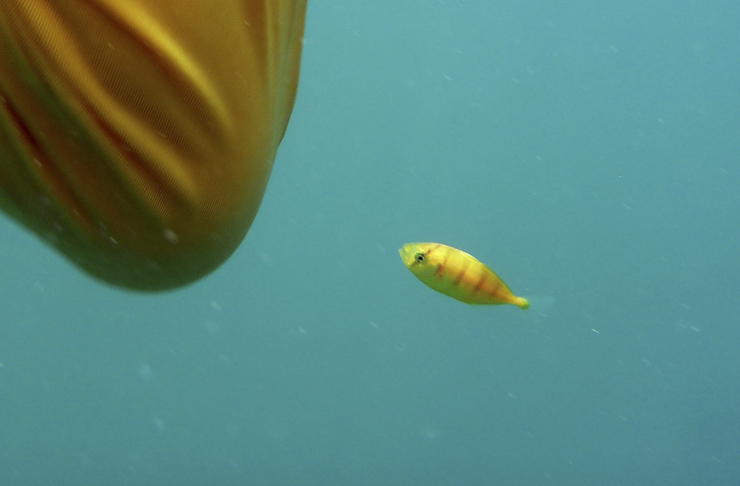Published in the Ocean Watch column, Honolulu Star-Advertiser © Susan ScottJuly 23, 2012
One of the most tedious tasks after a sailing trip is editing and filing new photos. But organizing is crucial. If I can’t find my pictures, I can’t share them.
 Susan Scott
Susan Scott
Craig and his pilot fish
While doing this chore last week, I was rewarded by a series of fish photos I took three weeks ago in Mexico’s Tenacatita Bay. As I cut, cropped and centered, I remembered the fun we had with that little fish. I wondered whether this species is found in Hawaii, what the fish eats and how big it gets. When sorting was over, I opened my books and entered the remarkable world of pilot fish.
The name pilot fish comes from the fish’s inclination to accompany sharks, rays, turtles, ships — and occasionally people.
Craig and I acquired our pilot fish after jumping off our anchored sailboat to snorkel around some nearby pinnacles. As I passed a seaweed-laden buoy, I saw (cross-eyed) a yellow, 2-inch-long leaf stuck to my mask. I brushed at it, but this was no leaf. A baby pilot fish, yellow with black stripes, had glommed onto me.

But not for long. When Craig swam over to check it out, the little fish made a beeline for Craig’s yellow-and-black rash-guard. For the rest of the day, that juvenile fish zoomed around Craig’s torso, happy as Nemo finding his dad.
The pilot fish’s scientific names, Naucrates ductor, come from a second-century belief that these fish steered, or piloted, ships to safety. In Greek, “naucrates” means ruler of ships, and “ductor” is Latin for a leader.

Seventeenth-century sailors, noting that pilot fish also hung around sharks, believed fish steered sharks to food. Others thought pilot fish led whales and swimmers to safety.
Appealing idea, but pilot fish are neither that smart nor that noble. These carnivores are following their food, which are parasites living on their hosts.
Besides a free lunch, pilot fish also get a free ride by swimming in the friction layer of water around the host. The host’s forward movement pulls the pilot fish along with it.
Pilot fish are found around the world, including Hawaii, and grow to 12 inches long. As adults these fish are white with black stripes. Their favorite host is the oceanic whitetip shark. Baby pilot fish hover beneath floating material near shore and offshore.

After his swim, Craig climbed onto his stand-up surfboard, paddled to shore and walked the beach. When he relaunched the board, his little yellow buddy was there waiting for him.
The reunion was a good one for Craig but surely disappointing for the pilot fish. Neither Craig nor his board carried parasitic pupu.
A friend of mine compares editing digital photos to an interminable visit to the optometrist: A or B, A or B. And when the subjects, both the fish and the man, are this charming, choosing one picture to save is hard. I kept them all.